| Back to... |
|
Share Our Stories! - Click Here |
Christopher
Dunn |
| From
Christopher Dunn |
The Curved Stone at Abu Rawash
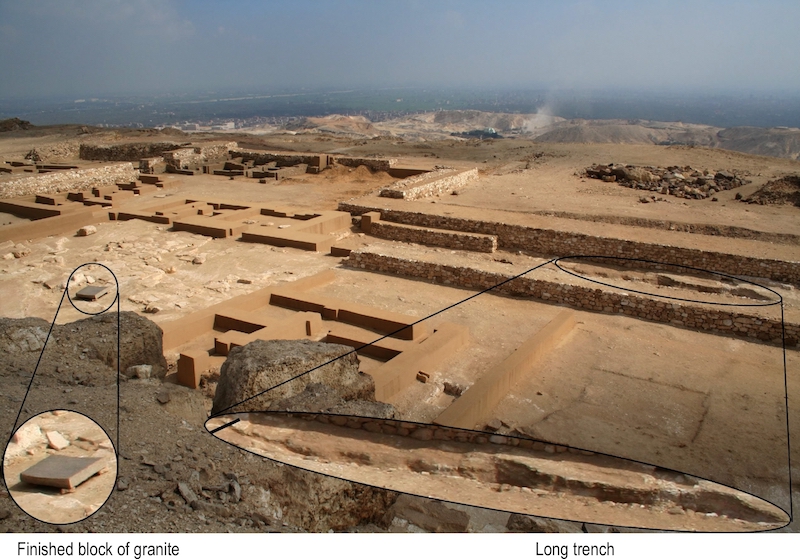
View from the top of the Abu Rawash pyramid
The compound curved granite stones
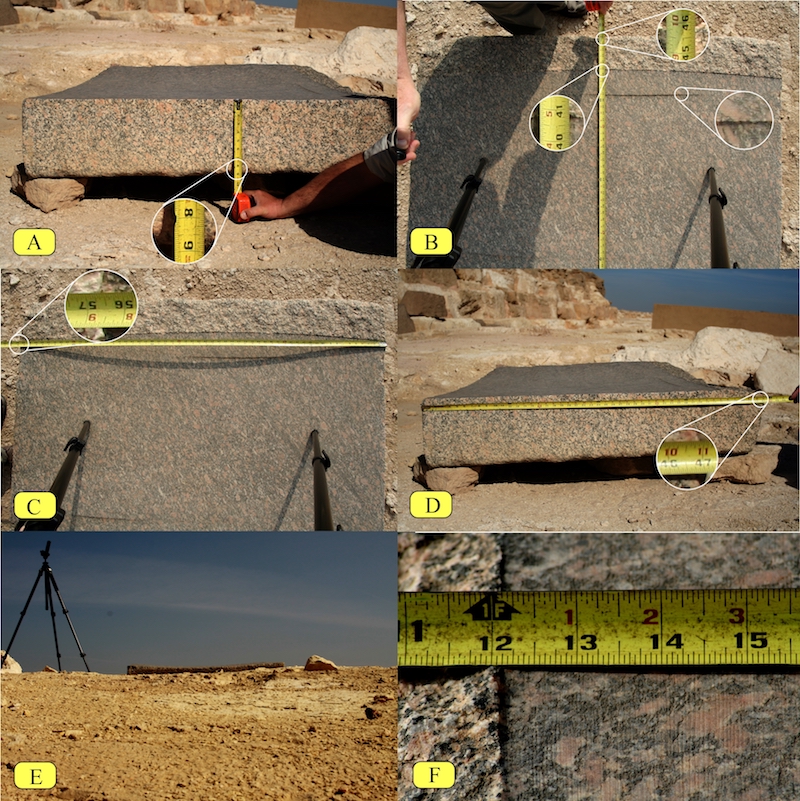
Photographing and measuring the stone

Chris Dunn checks the surface of the stone while David Childress looks on
Obvious curve to stone is revealed by straight edge
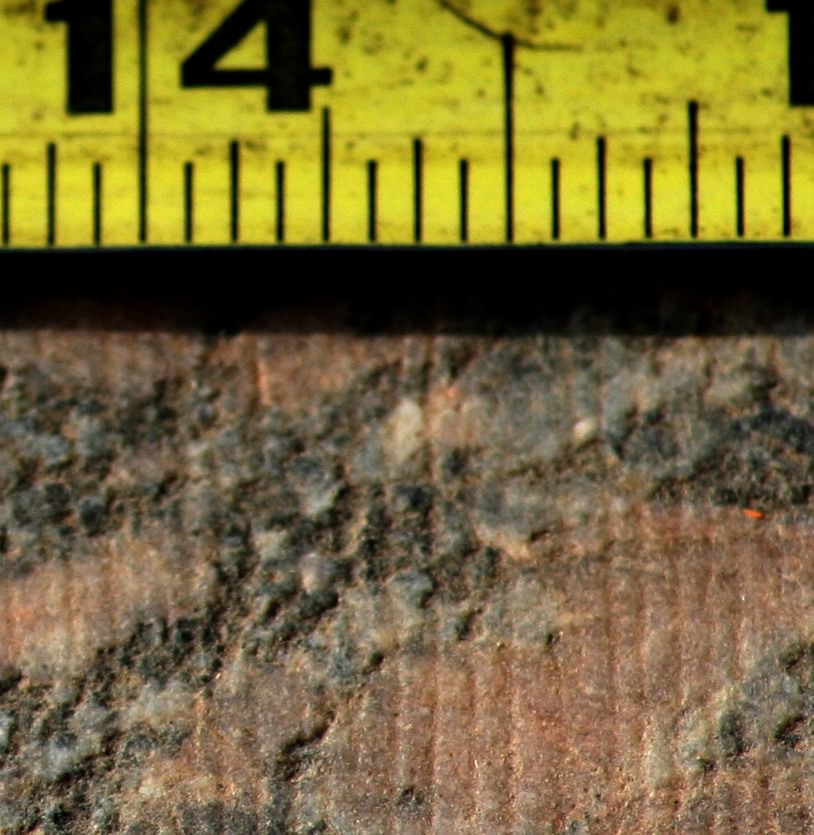
Macro image of the surface of the stone showing the striations of the saw
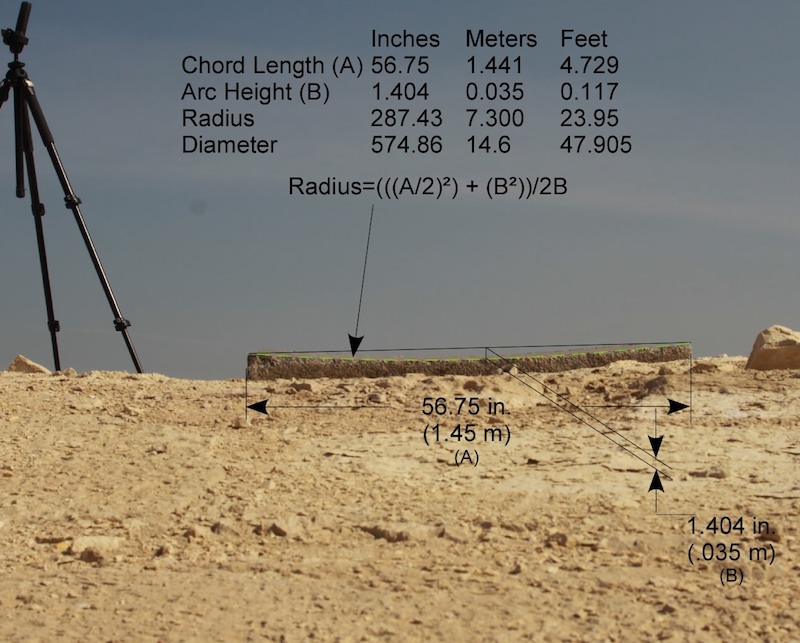
Determining the surface radius using the cord length and sagitta (cord height). The calculations indicate a radius of 23.95ft
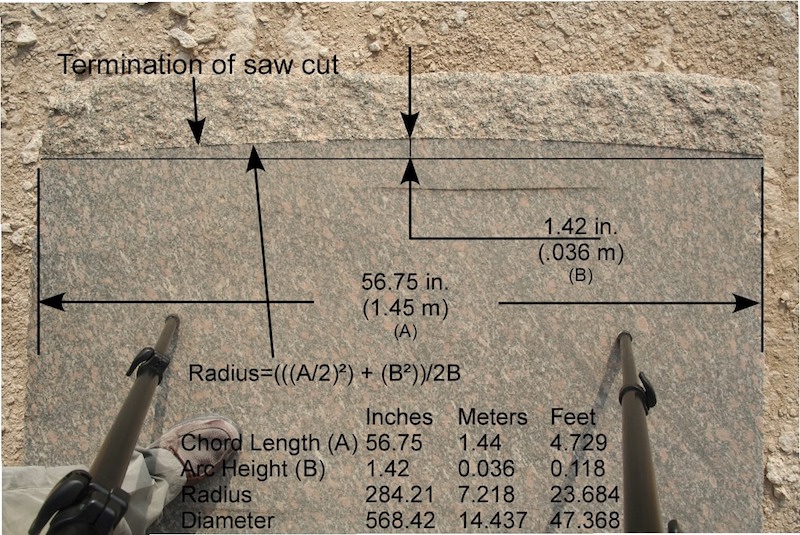
Determining the radius where cutting ended. The calculations indicate a radius of 23.68ft
| Top View (X & Y-Axes) | End View (Z-axis) | |||
|---|---|---|---|---|
| Feet/Rad/Deg | Meters | Feet/Rad/Deg | Meters | |
| Cutter Diameter | 37.5 | 11.43 | 37.5 | 11.43 |
| Radius Measured | 23.684 | 7.22 | 23.95 | 7.30 |
| Radian Measure | .792 | .782 | ||
| Tilt Angle of Cutter | 45.4 | 44.8 | ||
Calculations to determine the diameter of a cutter that when tilted will
create both radii
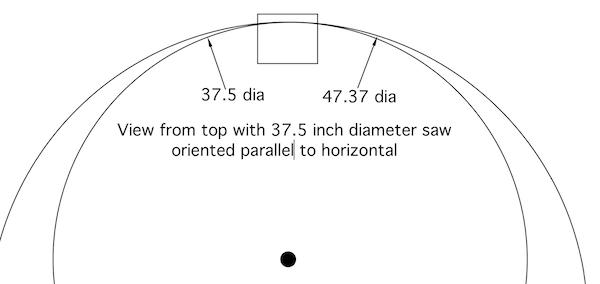
View looking down showing block radius with 37.5 feet diameter saw in a horizontal position
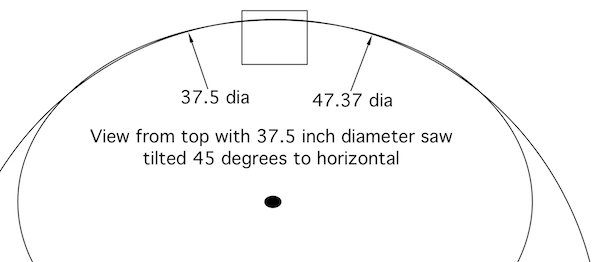
When tilted on a 45 degree angle, a vertical view of the saw shows it to
be an ellipse. It is a small section of the ellipse that will produce two
large radii.
One on the x - y axis (vertical view) and also on the x - z axis (horizontal
view along the y axis).
More information on this technique may be found at the following link: Cutting large radius

Using calculations to select cutter to create 1/61 scale model in micarta
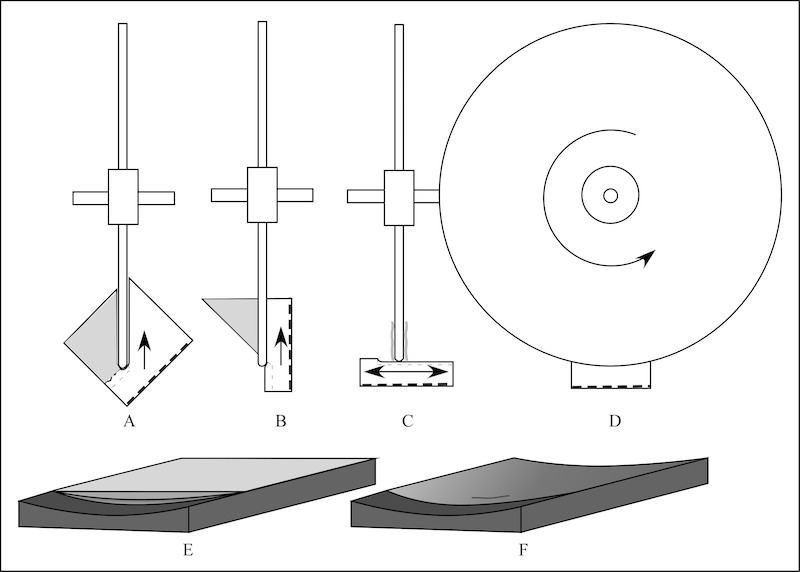
Mental gymnastics on paper trying to address anomolies
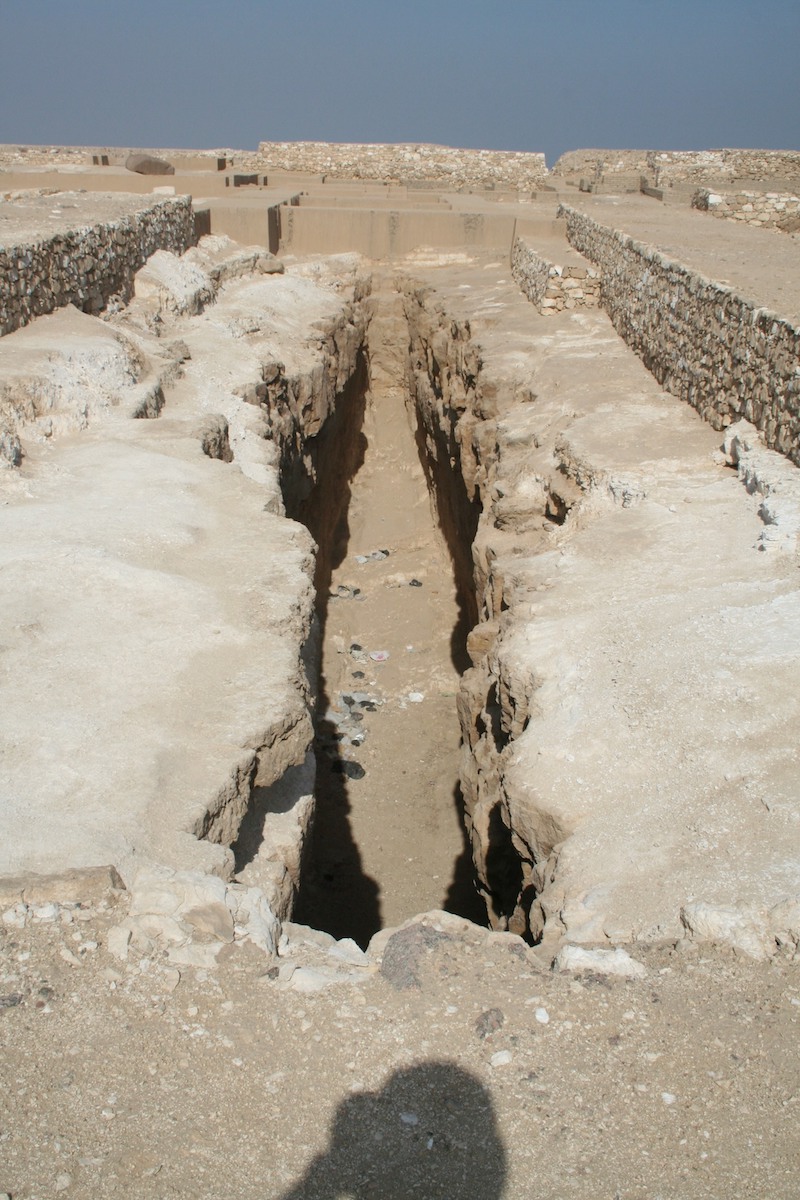
Referred to as a boat pit, this trench answers the question of how they would mount a 37 ft diameter saw
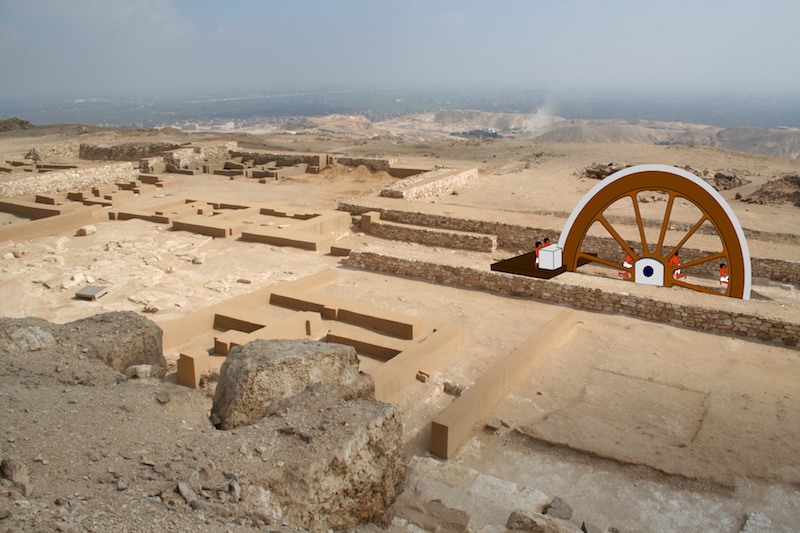
Mega Machines for Mega Builders
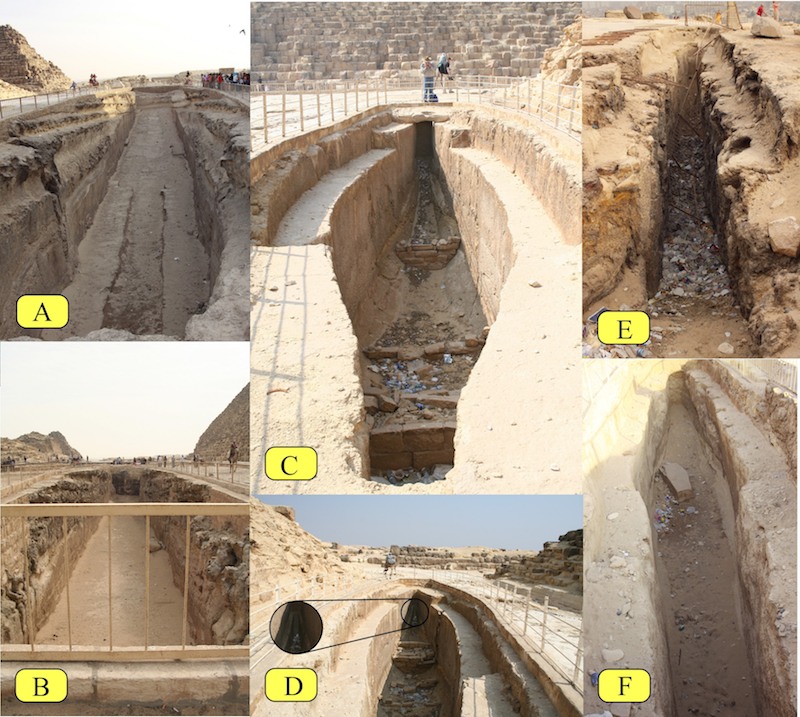
Also labeled as boat pits, numerous trenches are found on the Giza Plateau
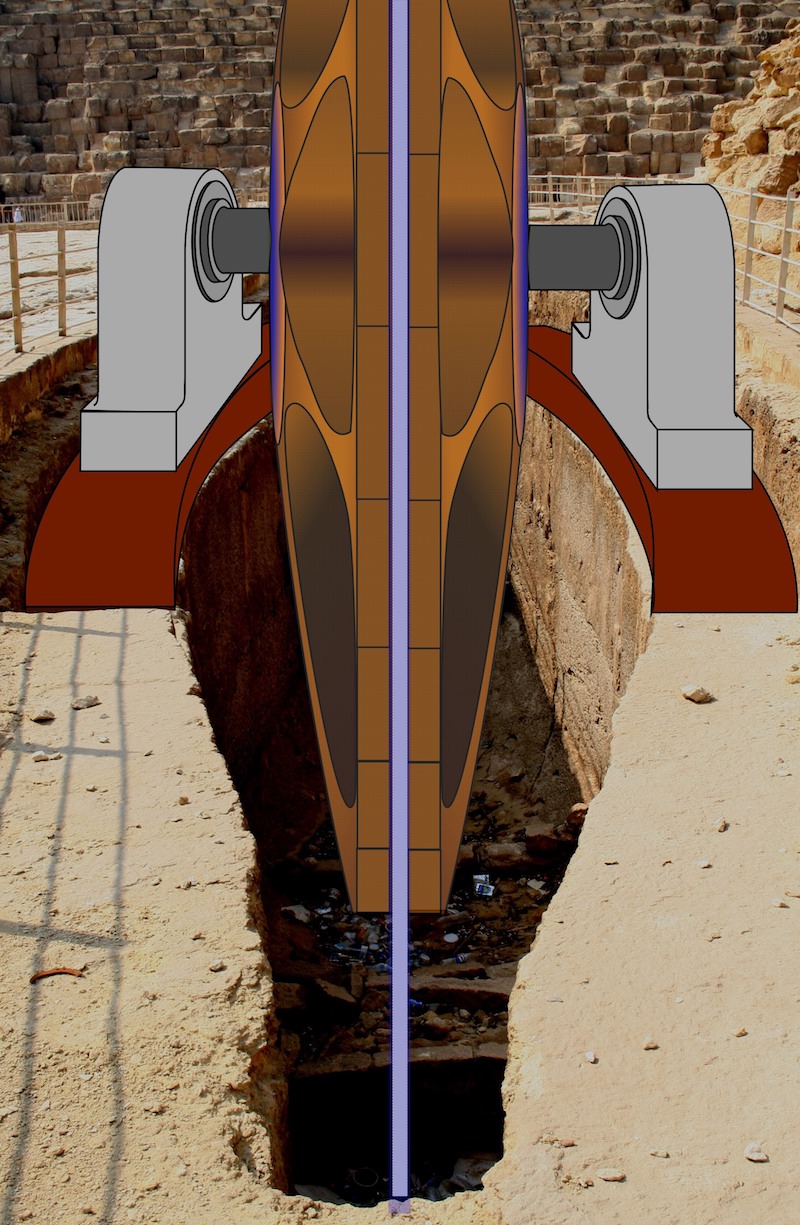
Saw mounted in one of the trenches
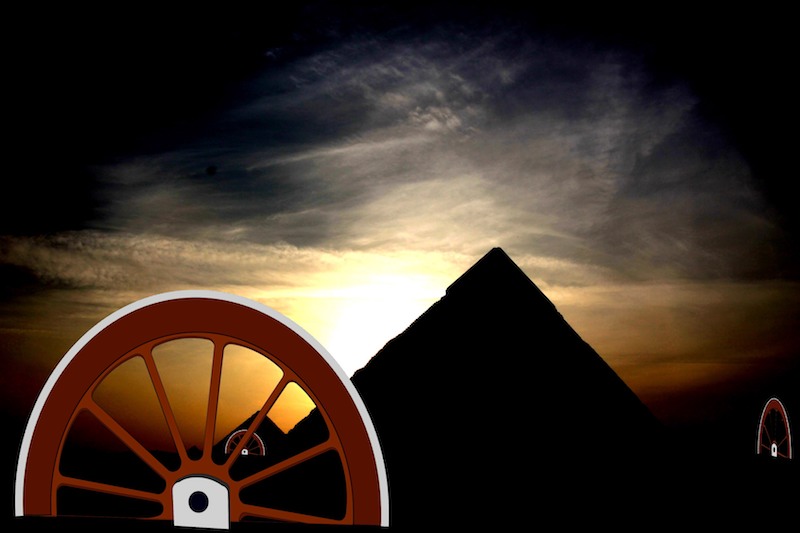
A view of the plateau at sunset.
The genius that went into the concept and design of the pyramids was not
limited when it came to designing the tools
to accomplish the job. Time to give the pyramid builders credit for their
true accomplishments, seen and not seen (implied)
Advanced Engineering at the Temple of Denderah
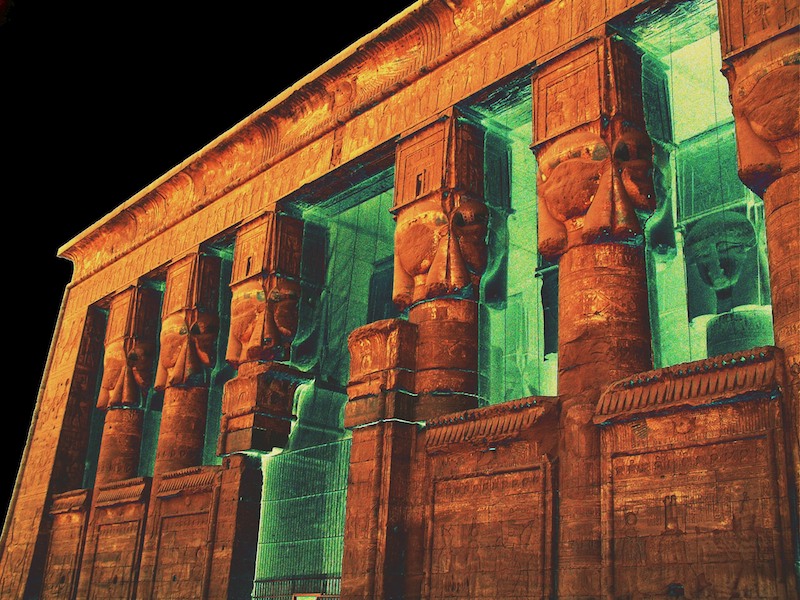
The Mysterious Temple of Hathor at Denderah
Mr. Peck enjoying tea with the temple guardian
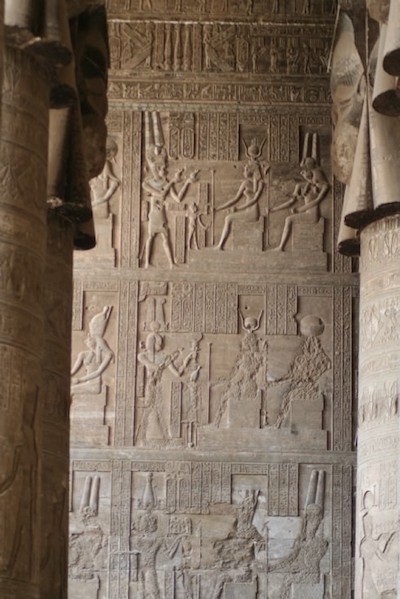
A view of one of the wall in the Hypostyle Hall
The columns in the Hypostyle Hall provide a hint of something more remarkable
A telephoto lens reveals a close-up of the column's capital adorned with
sculptures of a Hathor face on its four sides and topped
with a systrum. From these images, it can be seen that the capital is made
up of separate pieces and fitted together in assembly
Another example of the Column's capital
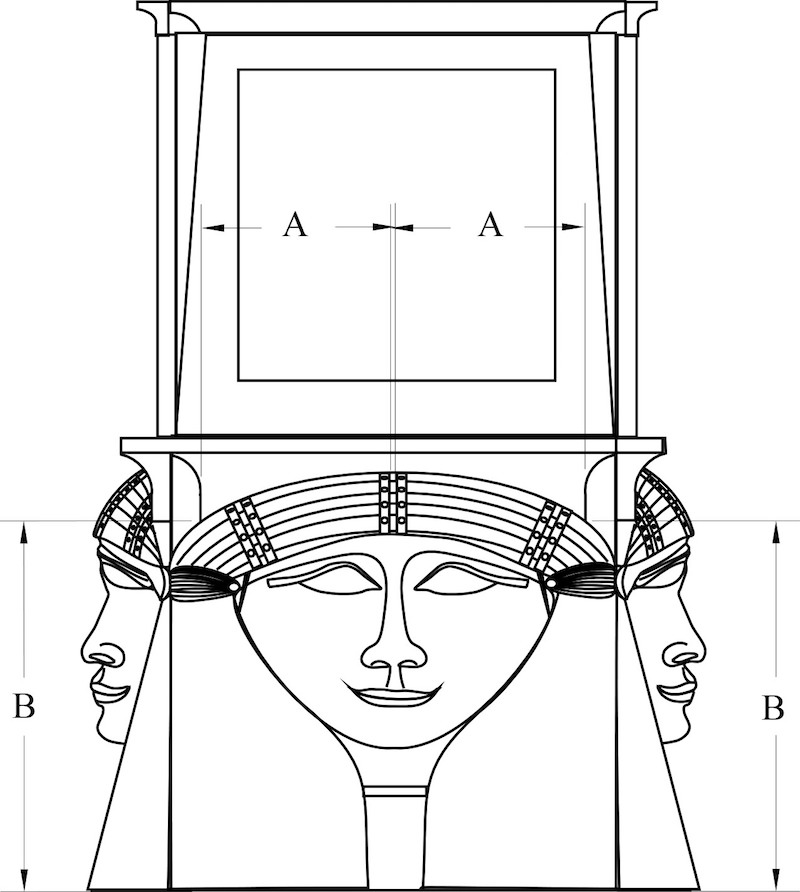
A drawing of the capital indicating where a curved surfaces intersect ( A and B )
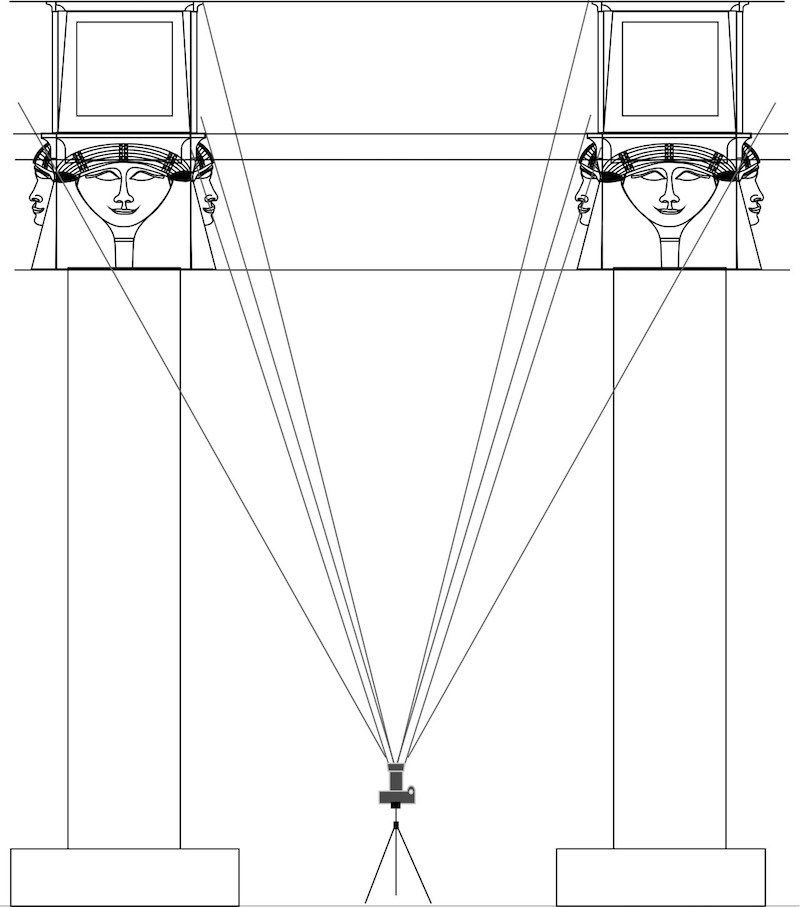
Set up of the camera between the columns using a right-angle viewer
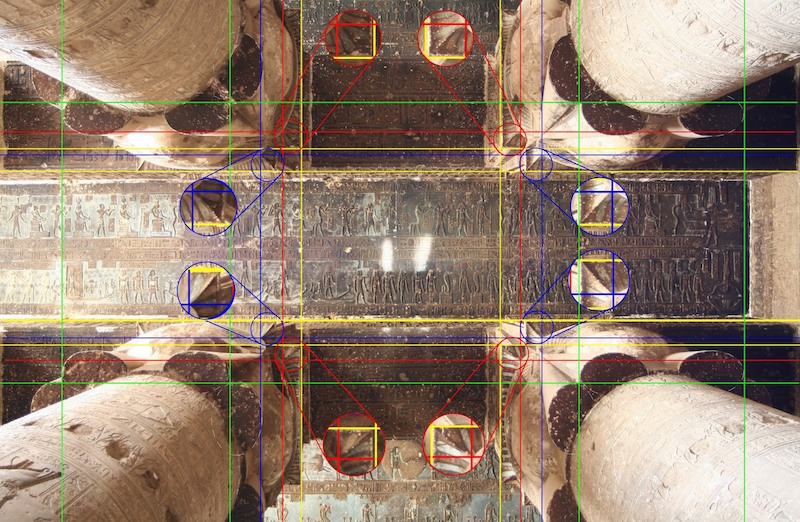
Construction lines showing the alignment of the capitals to each other. Pay attention to the red and blue lines which cross the A-B point
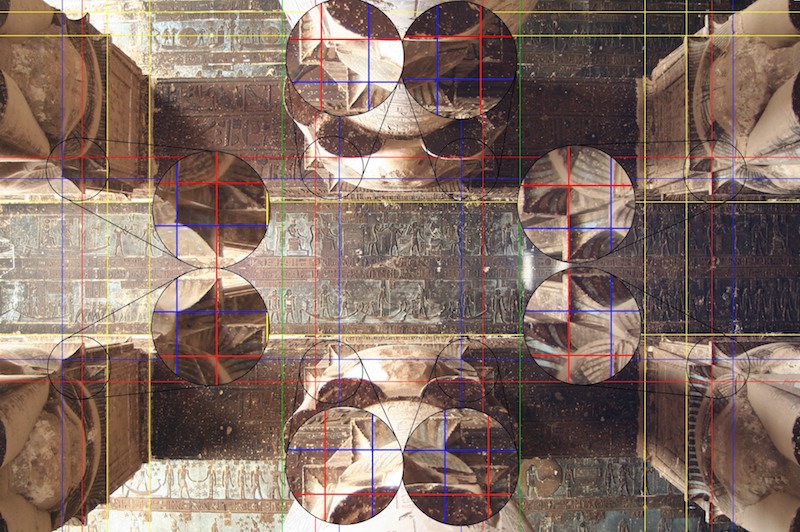
Construction lines crossing six columns
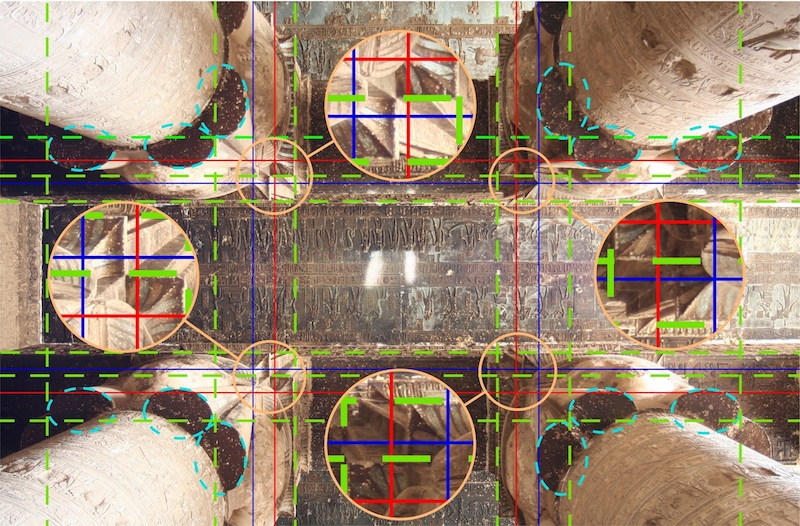
Photograph of four columns with construction lines and ellipses drawn on the bottom of Hathor's tresses
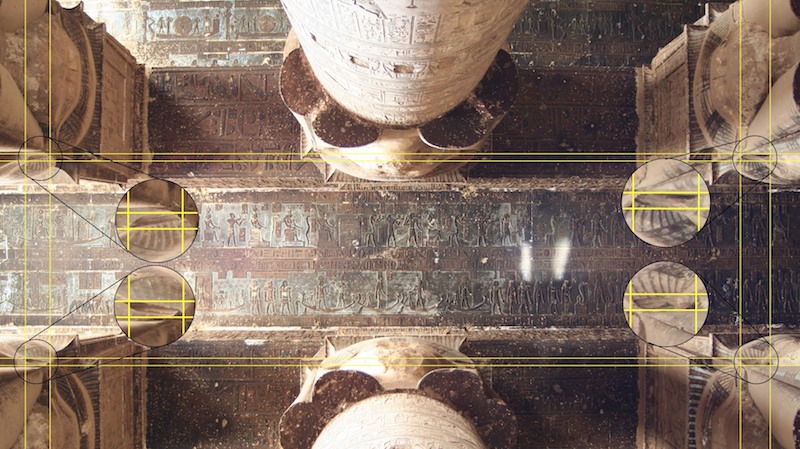
Even the three-dimensional ears of Hathor were precisely crafted and in alignment
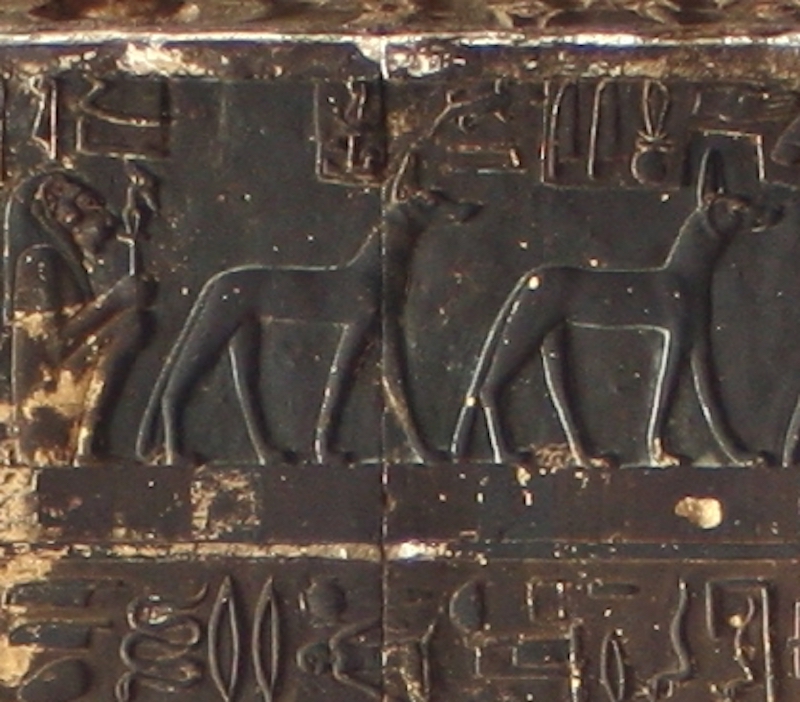
Solution to the mystery of how the Temple was built. This image shows the
carving on two ceiling blocks. It can be seen that there is a discontinuity
on the front
left leg of the dog as well as the back of her neck where the two blocks meet.
This indicates that the carvings were cut before being installed in the temple,
which is contrary to what Egyptologists tell us about how the ancient Egyptians
constructed their temples.
The Magnificent Temples at Luxor
The Symmetry and Precision of the Ramses Statues
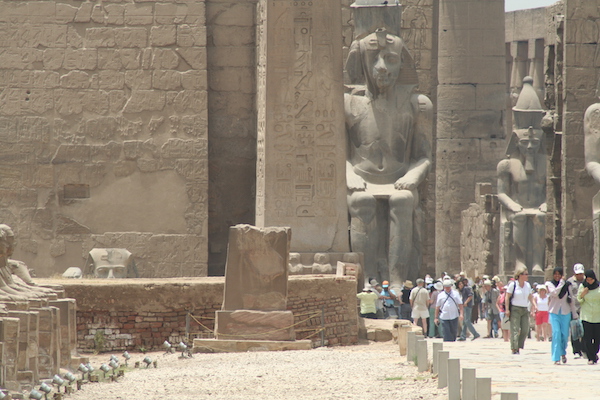
The Luxor Temple
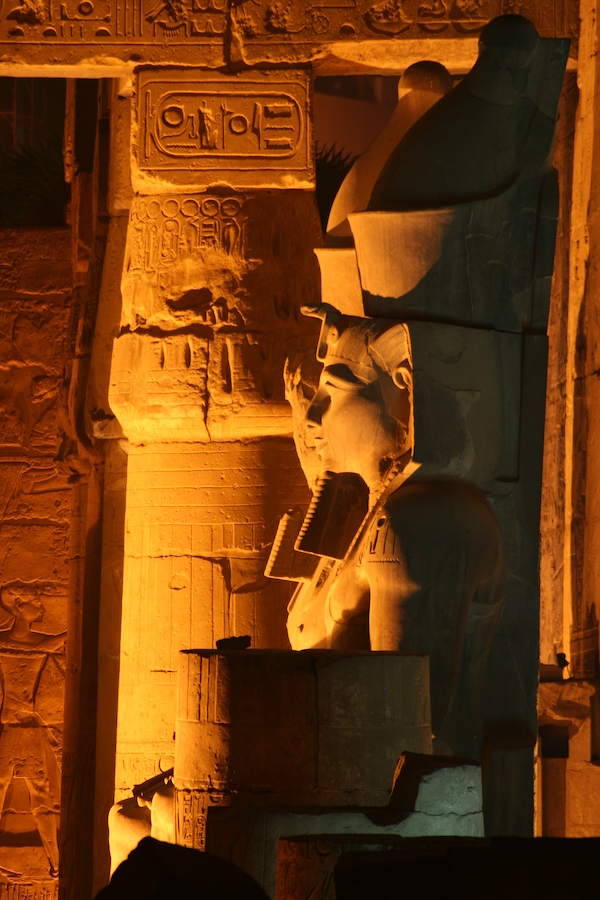
View of Ramses in the Temple from the Nile Corniche
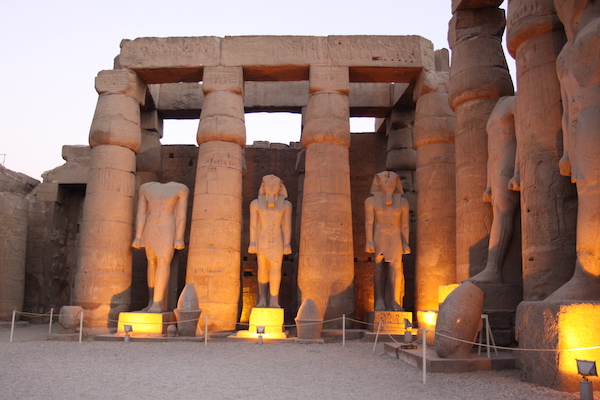
Entering the Ramses Hall, visitors are faced immediately with extraordinary features cut in hard granite
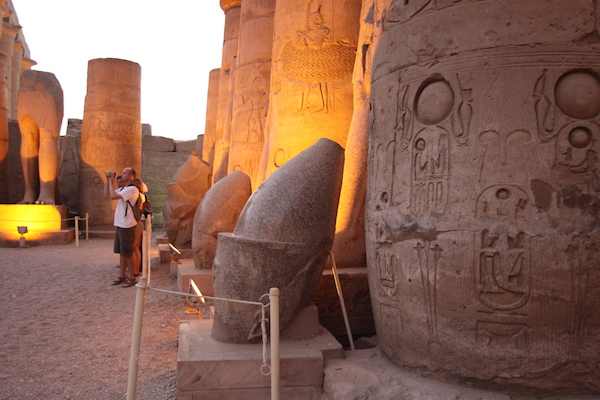
The White Crown of Upper Egypt toppled from Ramses head in antiquity
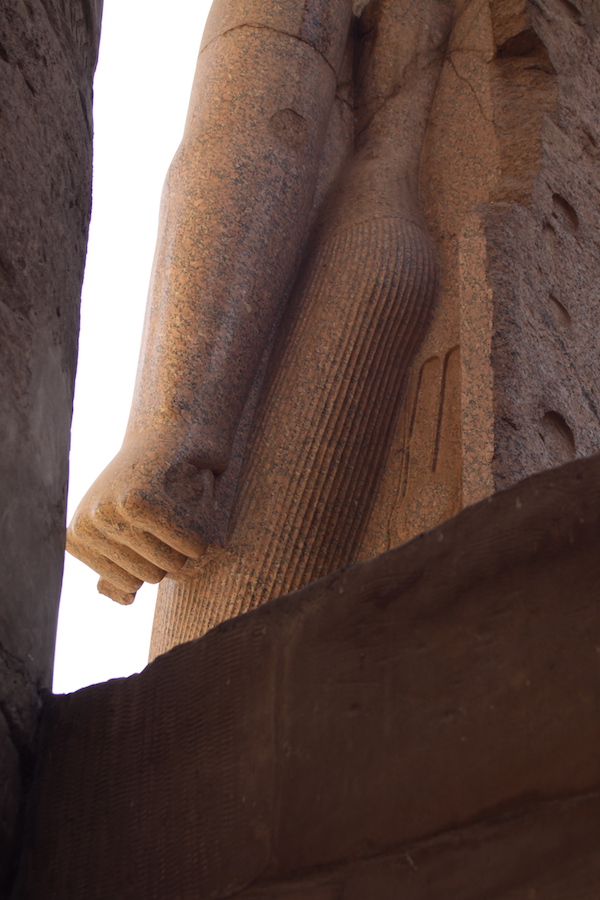
The noooks and crannies in the Ramses Hall reveal extraordinary attention to detail
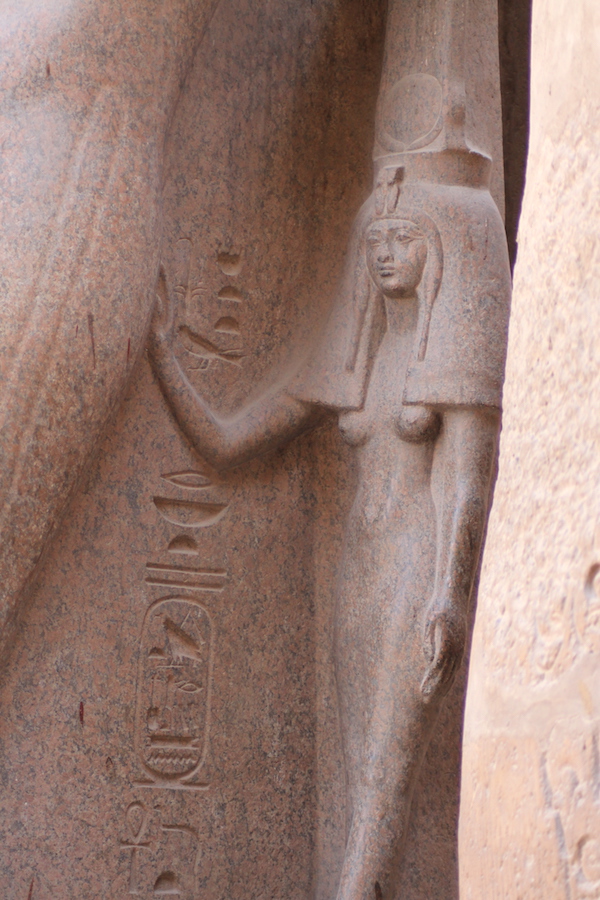
An "in relievo" figure of Nefertari pushing against the back of Ramses' calf to keep him moving
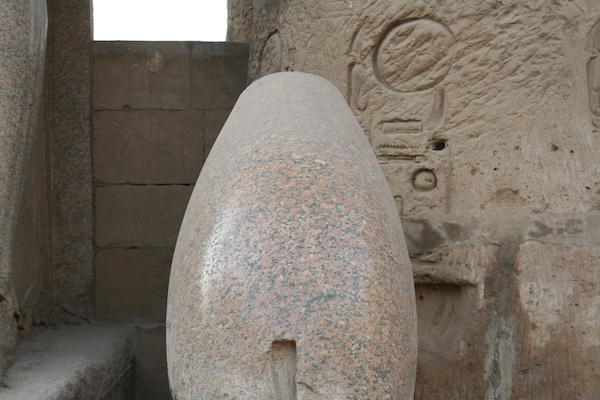
The White Crown: Smoothly finished and apparently to strict specification
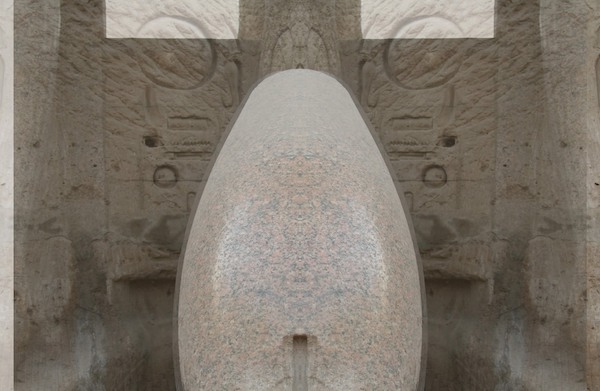
A copied reverse transparency to compare one side of the crown to the other
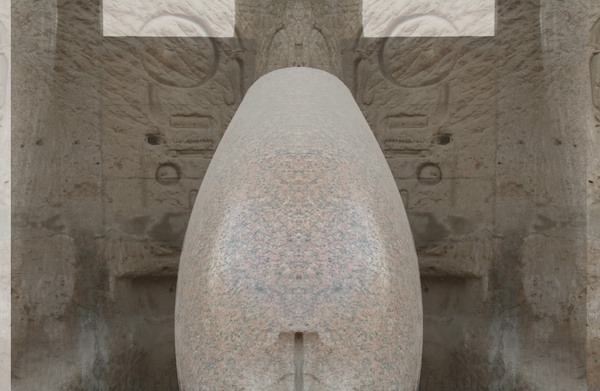
A surprising symmetry is discovered on the crown
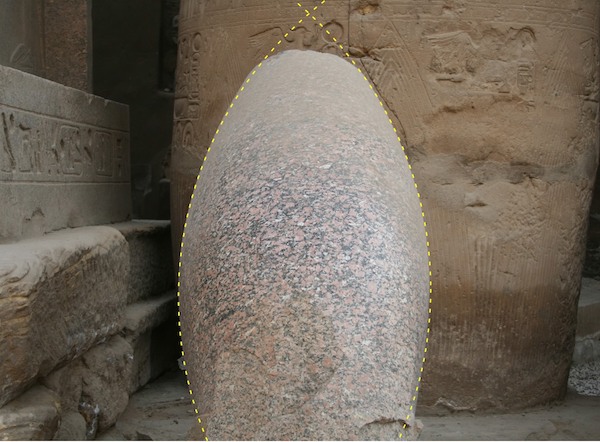
Comparing sides of a different crown to the same radius
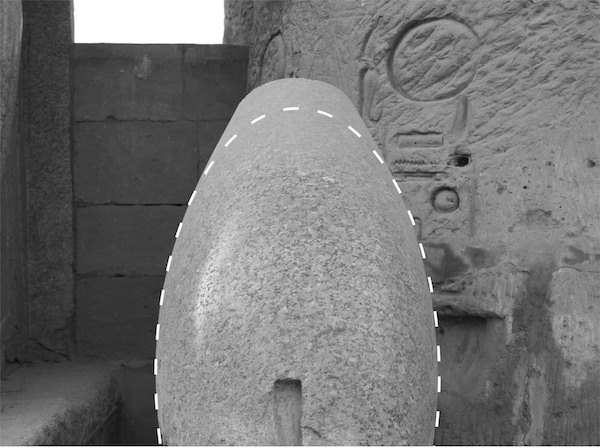
Is it possible that the crowns are crafted using the geometry of an ellipse?
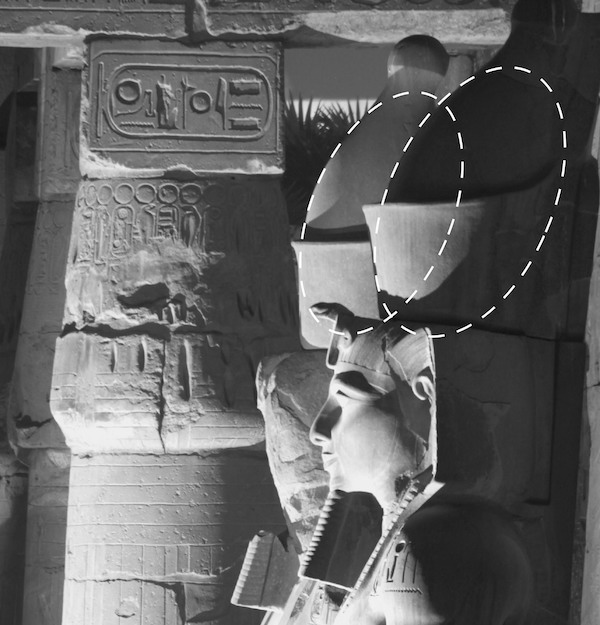
It appears that the crowns were modified ellipsoids
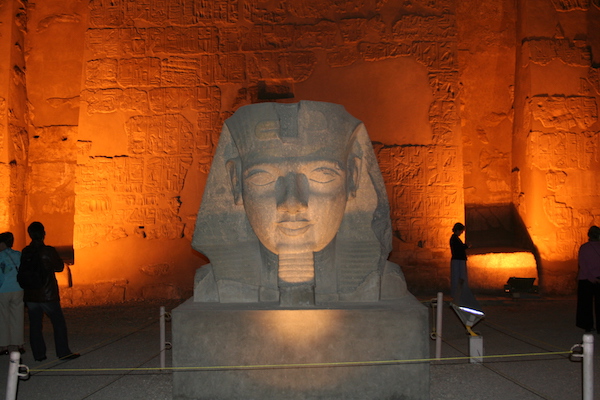
Coming face-to-face with Ramses outside the Temple
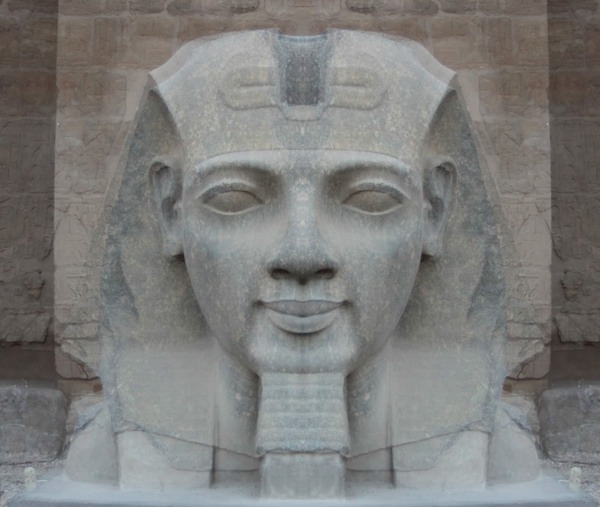
Creating a reverse image transparency and comparing one side of the face to the other
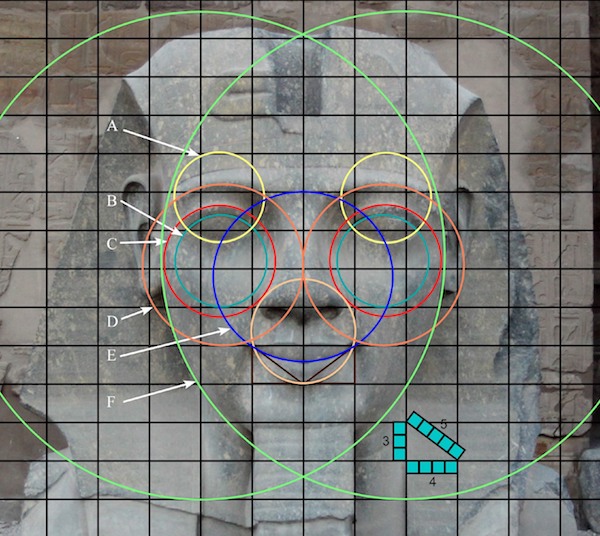
Using the extraordinary geometry of the mouth, a Pythagorean Triangle grid finds correspondences with other features of the face
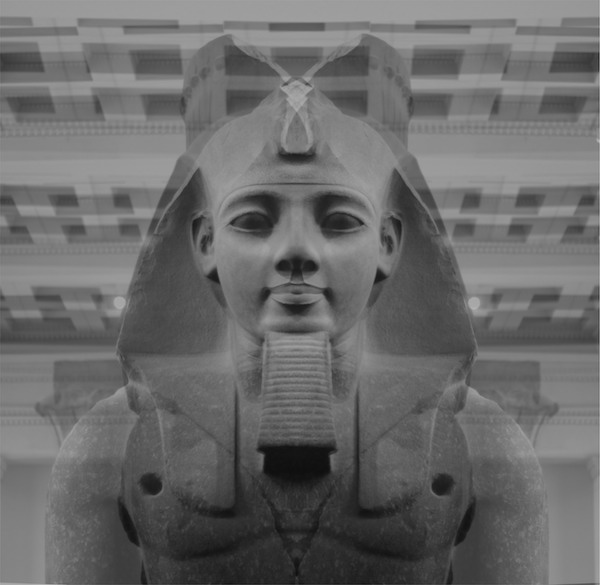
A different Ramses statue in the British Museum displays the same symmetry

Applying approximate computer measurements to the jawline
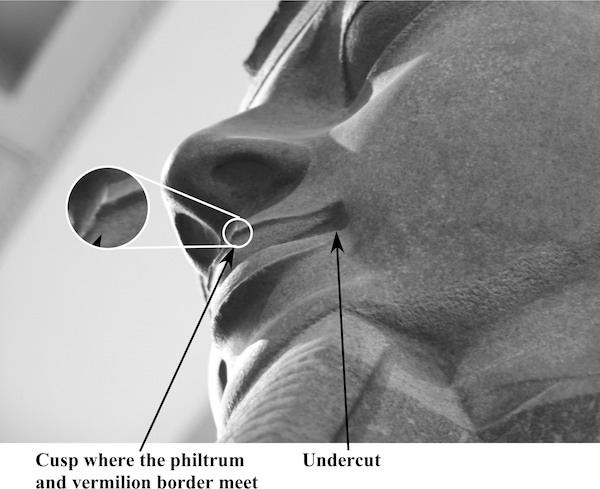
An error in the cutting where the tool dug into the corner of the mouth. Note that the lips were cut deeper to compensate
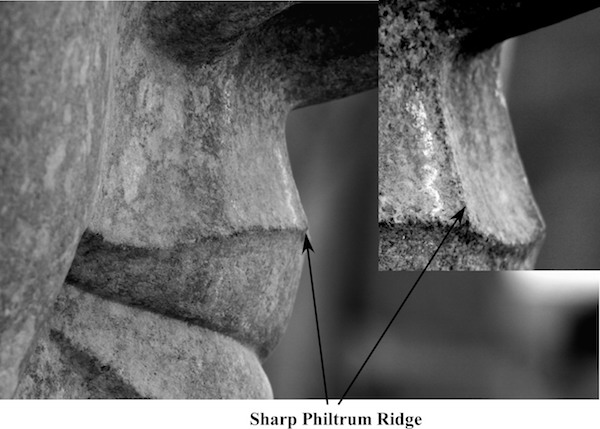
A close up of the mouth showing the rectangular toolmarks
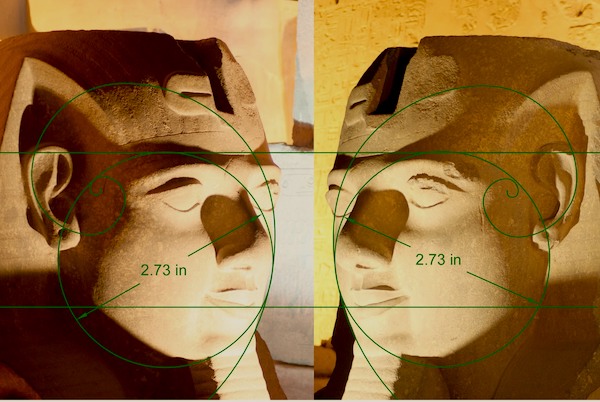
An approximate comparison right to left. As a reference point, both photographs
were taken
by aligning the camera so that the tip of the nose grazed the outline of the
cheek
Further studies need to be made of the Ramses' statues using 3-D scanning equipment